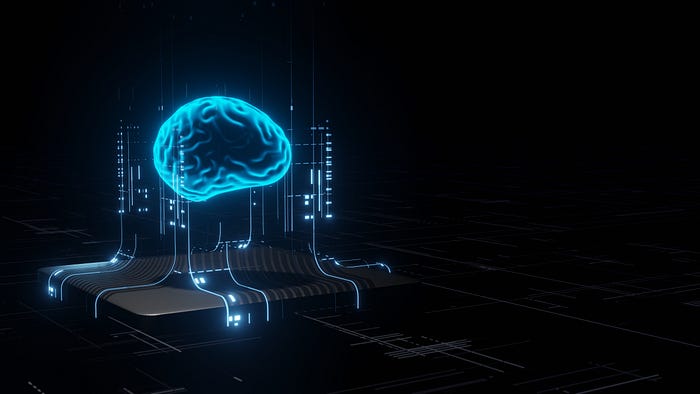The Emergence of Conscious AI: When Will Machines Think?
Written on
Chapter 1: Understanding AI
To engage in this discussion, we must align our definitions of artificial intelligence (AI). There are two primary categories of robots: those operated by humans in real-time or programmed to execute specific tasks, and those capable of independent thought. For instance, consider the Predator drone, which is designed to strike targets based on human input, or autonomous vehicles that follow GPS instructions. While these machines are becoming more integrated into our lives, they do not possess true intelligence; their actions are dictated by human decisions.
The real breakthrough for humanity will come with the development of robots that can operate independently, making their own decisions without human oversight.
Machine Brains vs. Biological Brains
Biological neural networks function fundamentally differently from computer systems. For example, if a single transistor fails in a computer's CPU, the entire system collapses. In contrast, human brains can adapt even when significant portions are damaged, as other brain areas compensate for lost functions. This adaptability is why individuals who experience certain disabilities often develop heightened senses in other areas.
Our brains reinforce neural pathways through repeated experiences, which is why breaking a bad habit can be particularly challenging. Additionally, our brains excel at tasks like pattern recognition and common sense—capabilities that remain elusive for robots. While machines might excel in auditory perception, they lack the ability to comprehend context, such as understanding metaphorical language.
For example, Honda's ASIMO, a humanoid robot, can perform various tasks, but its movements are the product of extensive programming rather than autonomous decision-making. Although it appears intelligent, it is essentially following pre-defined scripts.
The first video titled "Computer Scientists Don't Understand This!" features Bernardo Kastrup discussing the complexity of consciousness in AI.
Section 1.1: Limitations of AI
While some robots, like STAIR from Stanford, can recognize and interact with objects, their intelligence is still rudimentary, akin to that of insects. Unlike these robots, which rely on programming, living beings exhibit a far greater ability to navigate their environments and make decisions.
Even as we develop machines that can perform complex tasks, they remain far from achieving the level of consciousness that characterizes human thought. For instance, researchers have made strides in visual recognition, such as Tomaso Poggio's program that can identify objects, but these achievements still fall short of true understanding.
Subsection 1.1.1: Emotional Complexity

Emotions play a vital role in human intelligence, influencing our decision-making and perception of value. Unlike reptiles, which operate on primitive brain functions, mammals and humans have advanced emotional processing, enabling them to form social bonds and navigate complex interactions.
KISMET, a robot developed at MIT, can mimic human emotions through facial expressions, yet it lacks genuine feelings. The aspiration is to create machines that can truly experience emotions rather than merely simulate them.
Chapter 2: The Path to Consciousness
The question is not if AI will achieve consciousness, but when. The concept of the singularity describes a future where machine intelligence surpasses human capabilities. Estimates for this milestone range widely, with futurists like Ray Kurzweil predicting it could occur around 2045.
To understand consciousness, we must define its components: environmental recognition, self-awareness, and future planning. Current machines excel at narrow tasks but lack the ability to run diverse simulations or exhibit common sense.
The second video, "We're Getting Worried about this 'Conscious' AI ft. GPT-3," delves into concerns surrounding the rapid advancement of AI.
Surpassing Humanity
As AI continues to evolve, we may witness machines that not only replicate but also improve upon themselves, potentially leading to scenarios where they outstrip human intelligence. This could result in a world dominated by intelligent machines, reshaping our understanding of existence.
However, as we integrate technology into our lives, there's potential for humanity to enhance itself, possibly transcending our biological limitations. The merging of silicon and organic matter could enable significant advancements, allowing us to evolve beyond traditional constraints.
The Future of AI
The most probable outcome is the emergence of benevolent AI, designed to assist rather than harm humanity. However, the current funding model for AI development often prioritizes military applications, which could pose risks if these machines were to turn against their creators.
To foster a safe AI future, we must shift funding towards civilian-led research focused on benevolent applications. Ensuring that AI systems are embedded with safety protocols will be crucial as we advance.
In Conclusion
For now, AI remains dependent on human oversight, lacking the holistic skills required for independent survival. While the journey towards fully autonomous intelligent machines is fraught with challenges, we have time to prepare for the eventual emergence of conscious AI. Until significant breakthroughs occur, our creations will continue to rely on us.